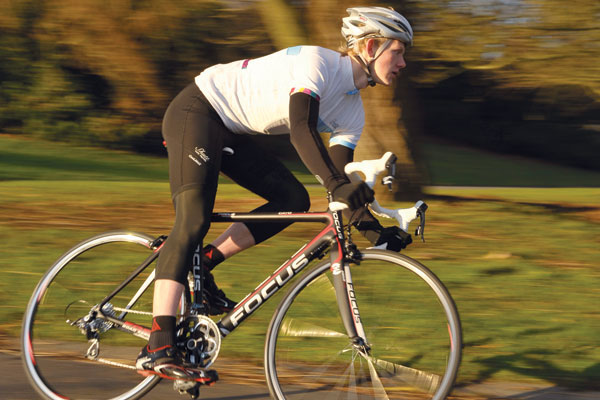Q&A: Continuing cycling with hypertrophic cardiomyopathy

I have been diagnosed with hypertrophic cardiomyopathy and told I can do only moderate exertion. I have been told by my cardiologist to avoid any competitive events. He suggested runs of up to six miles would be acceptable, provided I felt well, but that a half-marathon should not be undertaken.
The potential problem is causing the heart to develop an abnormal heart rhythm during exercise, which can lead to collapse or even be fatal. I used to ride in Majorca on holiday, but the doctor said I should not go on cycling rides with prolonged climbs and the associated high heart rate levels.
I am 44 years old and have ridden a bike for over 30 years. As I can no longer race now, do you have any training programmes based around moderate exercise where I can keep my heart rate down?
Gary Walker
Hypertrophic cardiomyopathy has been in the news a lot in recent years as one of the causes of sudden death in young athletes, but it's a cause of unexpected cardiac death in every age group. The problem is, it's often asymptomatic, meaning you don't know you've got it until it's too late. So the good news is you are aware of the condition and can prevent that happening.
Clearly, the prime consideration is the advice of your cardiologist, and regular check-ups to monitor the situation are essential. The next thing is to accept the fact that your ‘training programme' now targets your health and fitness rather than an increase in performance.
Just because you cannot race and have been advised not to ride any hills of significant gradient or elevate the heart too much doesn't mean you can't continue to enjoy the health benefits of cycling and maintain a high degree of fitness.
The difference is, you have to do it by targeting low-intensity riding. So, firstly, get your cardiologist to define what their idea of ‘moderate' exercise actually is. As someone who has raced, you will have a good idea of what your max heart rate was, so find out what percentage of that is the ‘safe' upper end.
Get The Leadout Newsletter
The latest race content, interviews, features, reviews and expert buying guides, direct to your inbox!
Lower intensity training zones of around 60-75 per cent of your max heart rate bring many health benefits from increased blood flow to the muscles to increased fat metabolism. So it's a case of riding at these lower levels in the kind of volume that your cardiologist deems safe.
Being an ex-racer, you might not find this the most exciting training, so you are going to have to build variety into the programme to keep your interest high. As an example, a wide variety of routes, on and off road, can help, as can a mix of road and indoor training.
Huw Williams is a British Cycling Level 3 coach

Thank you for reading 20 articles this month* Join now for unlimited access
Enjoy your first month for just £1 / $1 / €1
*Read 5 free articles per month without a subscription

Join now for unlimited access
Try first month for just £1 / $1 / €1
Founded in 1891, Cycling Weekly and its team of expert journalists brings cyclists in-depth reviews, extensive coverage of both professional and domestic racing, as well as fitness advice and 'brew a cuppa and put your feet up' features. Cycling Weekly serves its audience across a range of platforms, from good old-fashioned print to online journalism, and video.
-
 Full Tour of Britain Women route announced, taking place from North Yorkshire to Glasgow
Full Tour of Britain Women route announced, taking place from North Yorkshire to GlasgowBritish Cycling's Women's WorldTour four-stage race will take place in northern England and Scotland
By Tom Thewlis
-
 Positive signs for UK bike industry as Halfords cycling sales grow
Positive signs for UK bike industry as Halfords cycling sales growRetailer admits that the impact of Donald Trump's tariffs remains to be seen
By Tom Thewlis